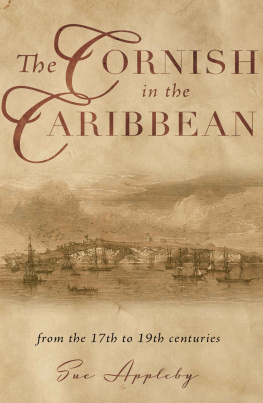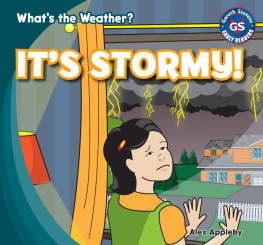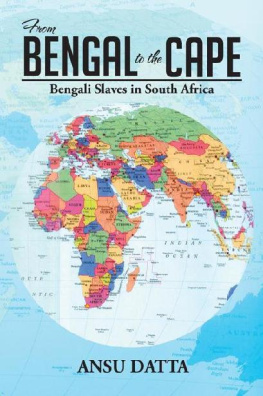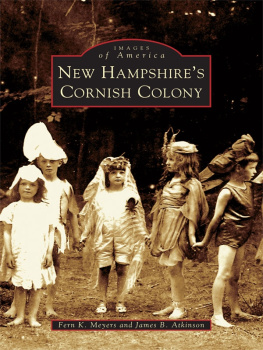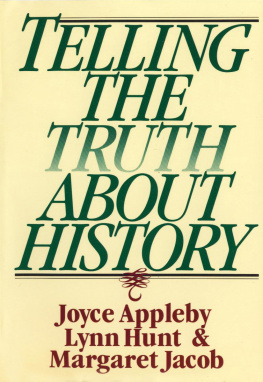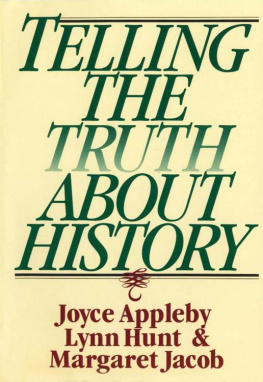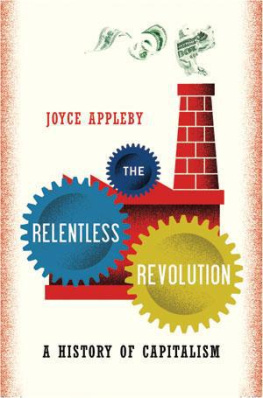Sue Appleby - The Cornish in the Caribbean: From the 17th to the 19th Centuries
Here you can read online Sue Appleby - The Cornish in the Caribbean: From the 17th to the 19th Centuries full text of the book (entire story) in english for free. Download pdf and epub, get meaning, cover and reviews about this ebook. year: 2019, publisher: Matador, genre: Home and family. Description of the work, (preface) as well as reviews are available. Best literature library LitArk.com created for fans of good reading and offers a wide selection of genres:
Romance novel
Science fiction
Adventure
Detective
Science
History
Home and family
Prose
Art
Politics
Computer
Non-fiction
Religion
Business
Children
Humor
Choose a favorite category and find really read worthwhile books. Enjoy immersion in the world of imagination, feel the emotions of the characters or learn something new for yourself, make an fascinating discovery.
- Book:The Cornish in the Caribbean: From the 17th to the 19th Centuries
- Author:
- Publisher:Matador
- Genre:
- Year:2019
- Rating:5 / 5
- Favourites:Add to favourites
- Your mark:
- 100
- 1
- 2
- 3
- 4
- 5
The Cornish in the Caribbean: From the 17th to the 19th Centuries: summary, description and annotation
We offer to read an annotation, description, summary or preface (depends on what the author of the book "The Cornish in the Caribbean: From the 17th to the 19th Centuries" wrote himself). If you haven't found the necessary information about the book — write in the comments, we will try to find it.
Sue Appleby: author's other books
Who wrote The Cornish in the Caribbean: From the 17th to the 19th Centuries? Find out the surname, the name of the author of the book and a list of all author's works by series.
The Cornish in the Caribbean: From the 17th to the 19th Centuries — read online for free the complete book (whole text) full work
Below is the text of the book, divided by pages. System saving the place of the last page read, allows you to conveniently read the book "The Cornish in the Caribbean: From the 17th to the 19th Centuries" online for free, without having to search again every time where you left off. Put a bookmark, and you can go to the page where you finished reading at any time.
Font size:
Interval:
Bookmark:

The
CORNISH
in the
CARIBBEAN
From the 17th to the 19th Centuries
Sue Appleby
Copyright 2019 Sue Appleby
The moral right of the author has been asserted.
Apart from any fair dealing for the purposes of research or private study, or criticism or review, as permitted under the Copyright, Designs and Patents Act 1988, this publication may only be reproduced, stored or transmitted, in any form or by any means, with the prior permission in writing of the publishers, or in the case of reprographic reproduction in accordance with the terms of licences issued by the Copyright Licensing Agency. Enquiries concerning reproduction outside those terms should be sent to the publishers.
All images used are from Wikimedia Commons and,
unless otherwise noted, are in the Public Domain
Matador
9 Priory Business Park,
Wistow Road, Kibworth Beauchamp,
Leicestershire. LE8 0RX
Tel: 0116 279 2299
Email: books@troubador.co.uk
Web: www.troubador.co.uk/matador
Twitter: @matadorbooks
ISBN 9781789019834
British Library Cataloguing in Publication Data.
A catalogue record for this book is available from the British Library.
Matador is an imprint of Troubador Publishing Ltd
For my brother,
John Appleby (19282017),
with love and respect.
Cornwall, at the southwestern end of Britain, is not just another English county. With only one land border, the River Tamar which divides it from Devon, it is, as Sue Appleby writes, almost an island with its three sea coasts. There always was, and still is, a distinct Cornish ethnic identity, forged through its unique history, its language, and its Celtic culture. Indeed, in 2014 the Cornish people were recognized under EU law as a distinct, minority ethnic group. Cornish, a Celtic language with similarities to Breton, Welsh and Gaelic, was a living language up to the late 1700s. As a result of efforts to revive it, an estimated 300 people now speak it fluently, and it was recognized as a minority language of the UK in 2002. Anglo-Cornish was a distinct variant of English at least up to the early 1900s. Cornwalls economy was traditionally based on mining (tin and copper), fishing, sea-faring, smuggling and wreckingactivities which have entered into British popular culture through the novels by Daphne du Maurier (and the movies made of them) and the TV series Poldark , based on the twelve books by Winston Graham.
Historians of the Caribbean have long been aware of the important role played in the British islands by another, even more distinctive ethnic group, the Scots. After the Act of Union in 1707, the inhabitants of the small and impoverished former kingdom grasped the opportunities offered by the expanding empire, especially the West Indian islands. The eminent historian Richard Sheridan published a pioneering article on the role of the Scots in the economy and society of the West Indies in 1977, and full-length books followed, like A. Karras, Sojourners in the Sun: Scottish Migrants in Jamaica and the Chesapeake, 1740 1800 (1992), T. M. Devine, Scotlands Empire: The Origins of the Global Diaspora (2004), and Douglas Hamilton, Scotland, the Caribbean and the Atlantic World, 17501820 (2005). Scottish surnames and place names are all over the English-speaking Caribbean.
But, though there is considerable literature on the Cornish Diaspora, the Caribbean has been largely omitted from it. This is the gap filled by Sue Applebys meticulously researched and very readable book. It tells the stories of the many, and very diverse, Cornish men and women who went to the Caribbean, and worked, exploited and fought (and sometimes died) there, over a span of nearly three centuries starting in the 1630s.
Some were wealthy plantation owners who made fortunes out of the labour of enslaved Africans who they owned. In Jamaica, Britains biggest West Indian colony and the most profitable until after 1807, the Price dynasty belonged to the elite of planters and slave-owners. Rose Price, who died in 1834 just as slavery was abolished, combined his Jamaican plantation business with an active involvement in the public and economic life of Cornwall. (When Jamaica was divided into three counties in 1758, one was called Cornwall, with its chief town named for the Cornish port of Falmouth.) Another such Cornish planter and slave-owning dynasty was the Mathew family, which owned estates in several islands in the 1700s, including Antigua and Tobago. At the other end of the social scale, many Cornish men and women came to the early English colonies like St Kitts and Barbados as indentured servants in the 1600s, shipping from the West Country port of Bristol to lives little better than those of the enslaved Africans.
Cornish men were active in the armed services, taking part in the innumerable sea and land battles through which the Western European powers vied for supremacy in the Caribbean and the Atlantic. Others were missionaries, especially Methodist clergy coming to evangelise the enslaved people from the late 1700sMethodism was especially strong in Cornwall, particularly among mining families. They worked in many of the islands, British, Danish, Swedish and Dutch.
Appleby shows how the heritage and occupational skills traditional in Cornwall were applied to the West Indies. For instance, a lively trade developed between Penzance and Jamaica in the 1770s with the main commodity being salted Cornish pilchards. Sea-faring had always been crucial to the Cornish economy, and many younger sons of the gentry in the 1700s and 1800s joined the Royal Navy as officers, seeing action in the Caribbean in the protracted conflicts with Holland, Spain and France. The Pellews were the outstanding Cornish naval dynasty of the period. Others worked in the merchant marine, like the Packet Captains who commanded the sailing ships of the Falmouth packet service which took the mail to and from the Caribbean in the 1700s and up to 1823. It ran two services, one to Jamaica, and one to Barbados and the Leeward Islands.
But the most striking transfer of Cornish skills to the Caribbean was to be found in mining. As the Cornish tin and copper mines declined, and often closed, in the middle decades of the nineteenth century, the Great Emigration of miners and their families got underway. They went all over the world, often to work in the very overseas mines which had put them out of employment at home, mines that could produce metals more cheaply than the older Cornish ones that had been worked for centuries. Appleby follows Cornish mining engineers, foremen and labourers to mines in Jamaica in the 1840s/50s, to guano mining on Sombrero Island near Anguilla in the 1860s to 1880s, to copper mines on Virgin Gorda in the British Virgin Islands in the mid-nineteenth century, to gold and diamond mining in British Guiana in the 1880s, 1890s and early 1900s, to gold mining on Dutch Aruba in the late 1800s, and to Cuba for copper mining around the same period. These men, often accompanied by women and children, were highly mobile, as they had to be, for many of these Caribbean mining ventures lasted only a few years. Though the underground workers, and the engineers and mine captains, were all men, some women did work at surface jobs in these West Indian mining operations. Besides the expertise and personnel, much of the equipment and machinery also came from Cornwall.
This book makes an original and valuable contribution to the literature on the Cornish Diaspora, and to the historiography of the Caribbean. And its focus on the many human stories of Cornish people in the islands makes it a readable and engaging study.
Font size:
Interval:
Bookmark:
Similar books «The Cornish in the Caribbean: From the 17th to the 19th Centuries»
Look at similar books to The Cornish in the Caribbean: From the 17th to the 19th Centuries. We have selected literature similar in name and meaning in the hope of providing readers with more options to find new, interesting, not yet read works.
Discussion, reviews of the book The Cornish in the Caribbean: From the 17th to the 19th Centuries and just readers' own opinions. Leave your comments, write what you think about the work, its meaning or the main characters. Specify what exactly you liked and what you didn't like, and why you think so.

